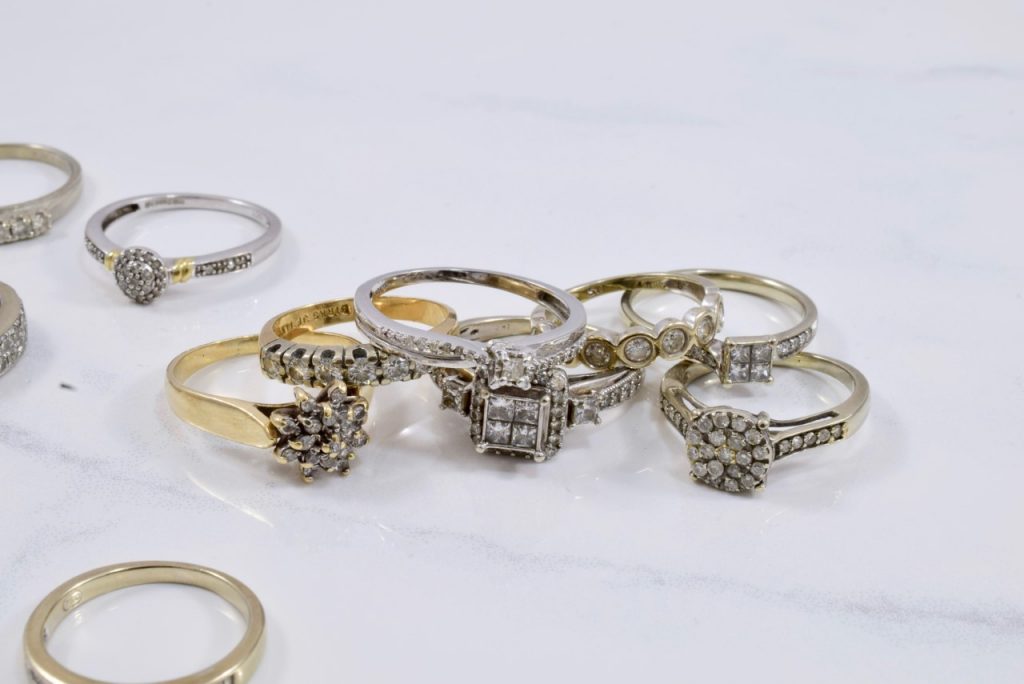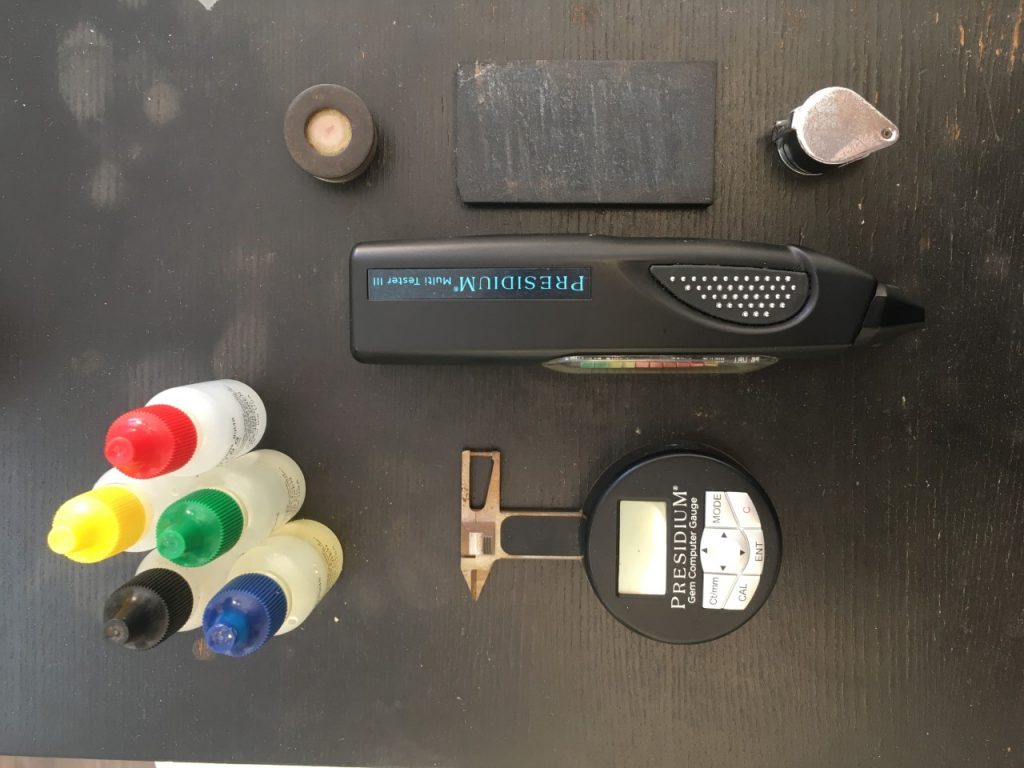Does the price of gold have you tempted to sell your unwanted jewellery? Before you part with your gold pieces, it may well benefit you to know the karat weight. But density, gold-plated jewellery, and pennyweight measurements can cause confusion, leading to improper karat rating for purity. What does all this mean, you ask? Don’t worry about frightening flashbacks of math class. We are going to answer how to figure out the pure gold content in any karat weight.
What Is A Troy Ounce?
A Troy ounce is a unit of weight used for precious metals, such as gold, silver, platinum, and palladium. One Troy ounce is equal to 31.103g. A Troy ounce should not be confused with a regular “Avoirdupois” ounce, which is 28.35g. And, further complicating the definition of “an ounce,” a US fluid ounce has a volume of 29.57mL, while an imperial fluid ounce has a volume of 28.41mL.
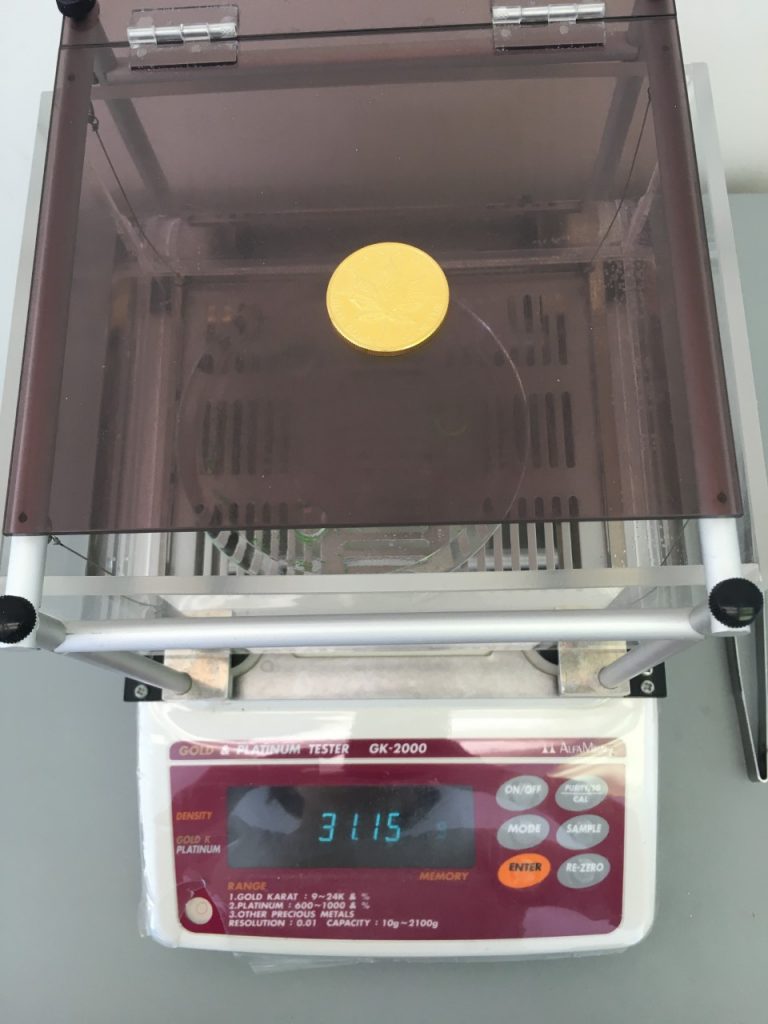
What Is a Karatage of Gold?
Karatage is a measure of the gold’s purity (in percent) or fineness (in parts per thousand), with pure gold defined as “24 karat.” Karatage is not used to describe the purity of silver or any other precious metals. The purity of gold can be calculated by dividing the karat number by 24, as in the table below. Note that this “karat” should be distinguished from the “Carat,” which is a measure of gemstone weight, equal to 0.2g).
| Karatage (k, or kt) | Fineness (parts per thousand) | Purity (percent) |
| 24kt | 999 | 99.9% |
| 22kt | 916 | 91.6% |
| 18kt | 750 | 75.0% |
| 14kt | 583 | 58.3% |
| 10kt | 416 | 41.6% |
| 9kt | 375 | 37.5% |
Why Your Old Jewellery Is Worth More Today Than You Paid For It
Jewellery is often sold to a retail customer for far more than the value of its precious metals content. This markup, which often ranges from 2 to 10 times the precious metal value, pays for the cost of the jewellery manufacturer, wholesaler, retail store expenses, wages, and profit margin. When a piece of jewellery is recycled for its precious metals content, the recycler (such as Canada Gold) pays a percentage of the precious metals content. At Canada Gold, we pay from 80% (for pieces that are refined) to 110%+ (for pieces that can be reused). Over the past 20 years, gold prices have increased by more than 500%, from $250 in 2001 to $1500+ in 2020. As a result, the gold content of old jewellery is often worth more than what the customer initially paid at a retail jewellery store.
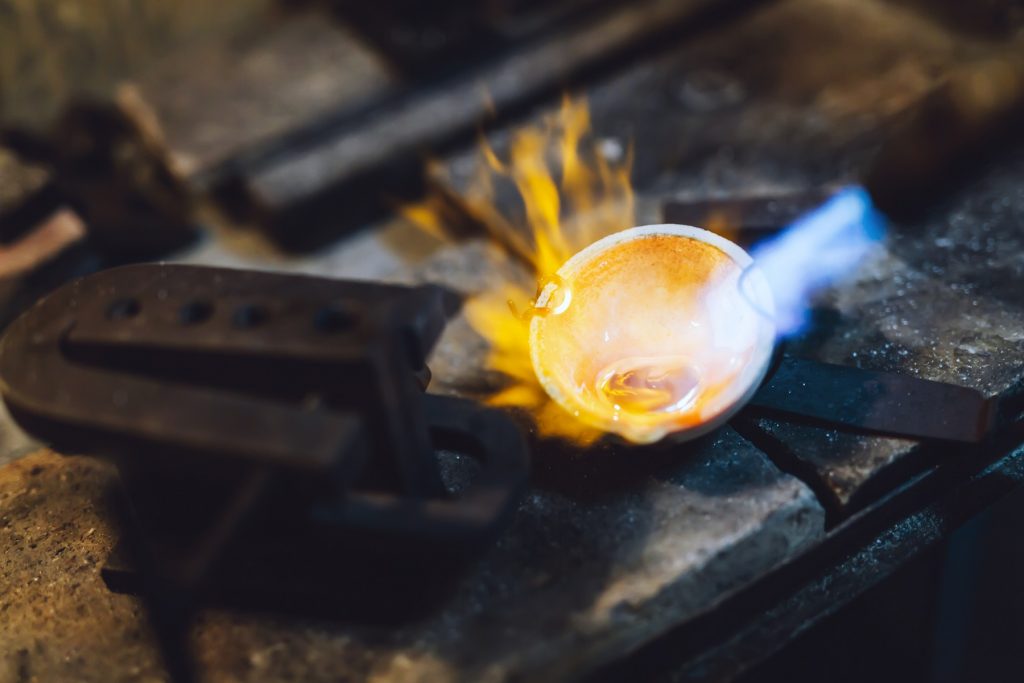
What Is Gold Filled?
A piece of jewellery hallmarked “Gold Filled” contains a thick plating of gold, of the specified purity, surrounding a core of brass. Interestingly, a gold-filled piece actually contains gold on the outside, and it is filled with brass. By definition, a “14k G.F.” piece contains 95% brass, and a thick, durable plating of 14kg gold, making up 5% of the piece’s total weight. Accordingly, since it contains 5% of its weight of 14kt gold, the piece contains 2.91% pure gold by weight. Antique Pocket watches from the US are often Gold Filled, and hence do not typically contain enough gold content to justify refining them.
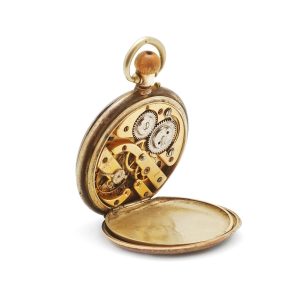
What Is Rolled Gold (RG) or Rolled Gold Plate (RGP)
These are additional terms that describe a similar gold plating process as “Gold Filled,” and the math to calculate the purity is identical. A piece hallmarked RG or RGP contains 95% base metal (e.g. brass or copper), with an outer layer of gold, typically of 14kt or 18kt purity. A piece hallmarked “1/20 18k RG,” for example, contains 3.75% pure gold by weight (not usually worth the expense of refining).
How Much Is My Gold Plated Jewellery Worth
A piece of jewellery that is gold plated contains a very thin coating of gold on the outside, applied with an electrical process. Hence, this technique can also be called “electro-gold plated,” and these pieces carry a hallmark of GP or EGP. The gold plating is typically less than 1 micron in thickness (less than 1/1000th of a mm!). The plating is prone to rubbing off, and the piece contains less than a few cents worth of gold.
How To Calculate Gold Density
Gold is one of the densest metals, with a density of 19.32g per cubic cm. This means that a volume of gold is 19.32 times heavier than the same volume of water. Lead, which anyone who has had a dental X-ray knows, is another very dense metal, with a density of 11.5g per cubic cm. Amazingly, gold is 68% more dense than lead. An Apple iPhone 11 has a volume of 87 cubic cm and weighs 188g. A gold bar of the same size would be almost 9 times heavier (1,680g) and have a gold value well in excess of $100,000CAD at 2020 gold prices.
What Is A Pennyweight
Pennyweight is a fairly antiquated measurement of weight. One pennyweight is equal to 1/20th of an ounce. So 1 pennyweight is equal to 1.56 grams. Nowadays, the most common use of pennyweight seems to be unreputable gold buyers posting rates in pennyweight instead of grams to make prices appear higher. Definitely something to watch out for!
Understanding how to calculate the pure gold content in any karat weight will help you make the most informed decision possible when it comes time to selling your unused jewellery.
